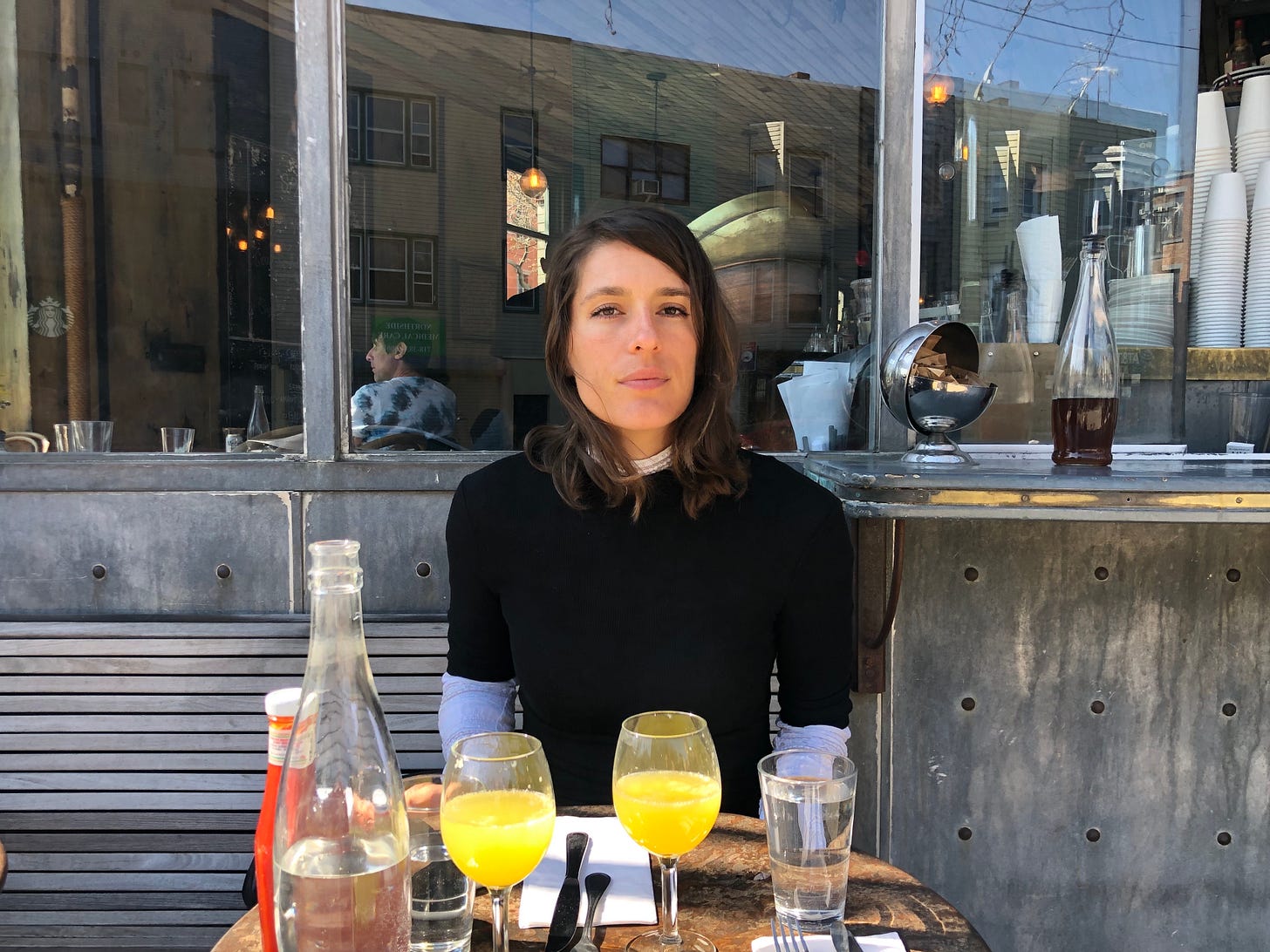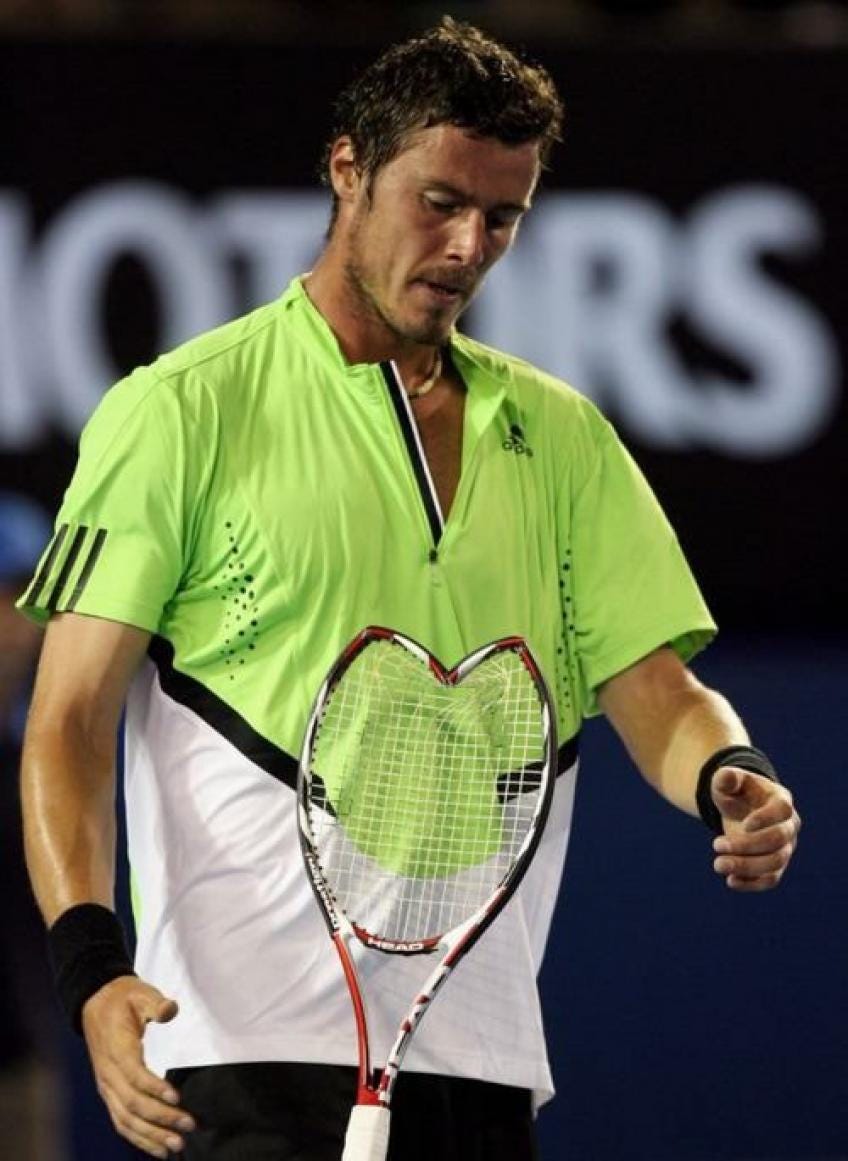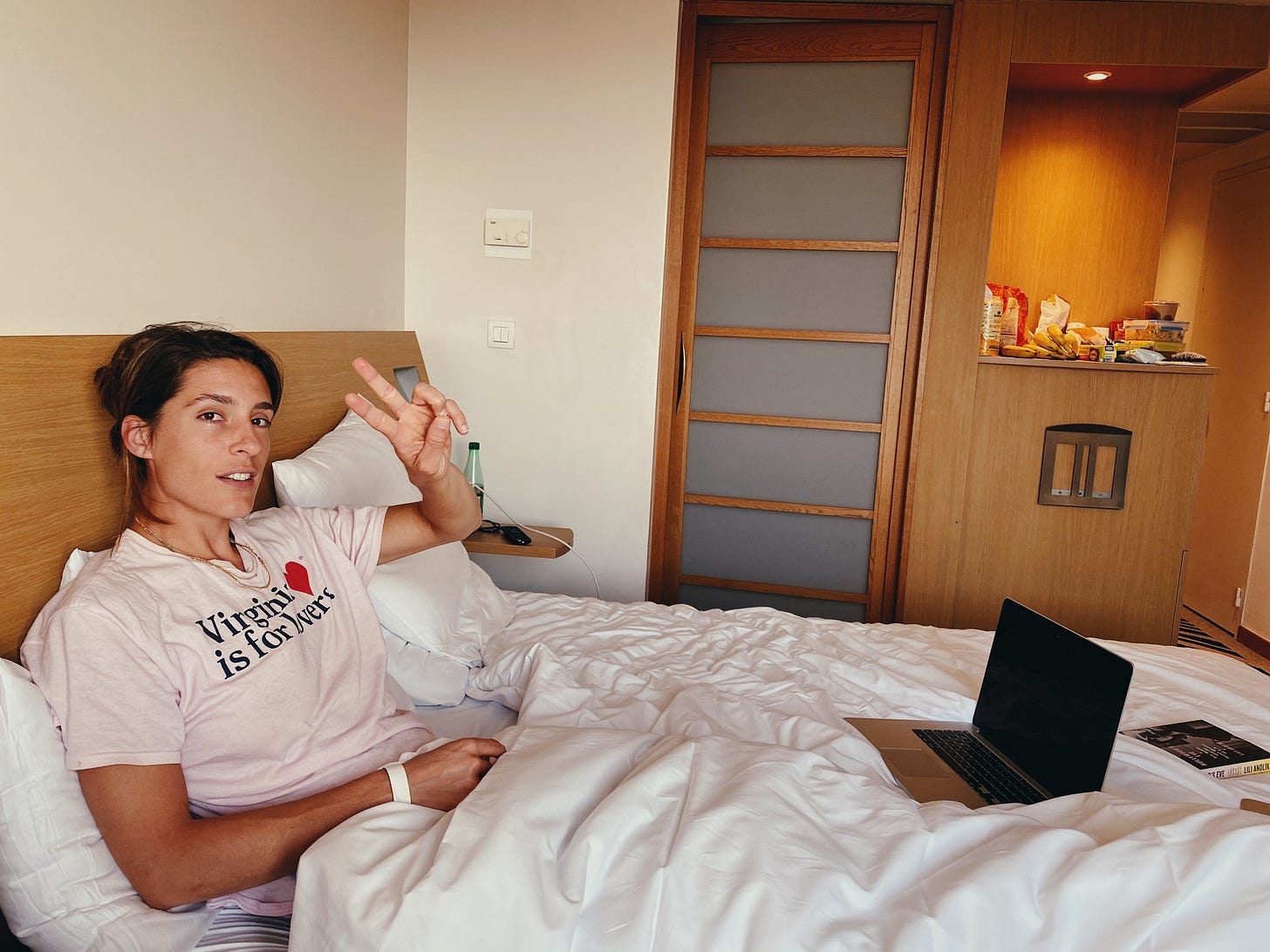It’s been only 5 days since we‘ve seen one of the best tennis matches ever and yet it feels like a lifetime. It’s the classic Grand Slam hangover where nothing matters anymore and you’re contemplating selling your TV. Do not despair! We are in this together. I, too, have lost all taste for food and I, too, have tried to make sense of life and have failed. I, too, have seen my nephew get a Carlos Alcaraz haircut and I, too, have marvelled in Coco Gauff’s New York appearances.
It's the circle of tennis. Just when you have gotten over the last Grand Slam tournament and have finally found solutions to live a normal life without a sporting event dictating your sleep and eating patterns, Wimbledon is around the corner, and it all starts anew. Damned be our souls.
Moving on! I have seeped through all your messages and have collected some of your questions. Not all have been answered but many have found their way into my notebook because I thought they were bigger subject matters to tackle. You might see your questions trickle down into my newsletters over the next few weeks. It’s a trickle-down-effect that actually works. Yay!
Let’s get into it. A few of your inquiries were remnants from Roland Garros and I will begin there.
What was so good about Carlos’ final set tie break? Could Jannik have done anything better? Asked by Weston and Janine. I combined their questions into one segment.
3 things happened in that final set tie break and the combination of the 3 things made Carlos virtually unbeatable for this stretch of the match. It started a few points before the tie break went underway when Jannik got to 30:30 on Carlos’ serve and threatened to break to win the match. It was a tricky moment for Carlos who had served for the match at 5:4 and who had had the momentum on his side for a good 40 minutes or so by then.
In this exact moment, 3 things fell into place. First, he got a second wind. His body shook off any pain and tiredness and sweat, was ready to pounce, seemingly okay to perform for another hour. Second, he entered the zone. The audience he had used to find a way back into the match became background, the surroundings blurry, the tennis ball grew. And third and maybe most important, all unnecessary ideas and thoughts dissipated, and his mind became a uniquely focused weapon. I’m speculating here, obviously, as I wasn’t in Carlos’ mind when all this went down but it sure looked like it from the outside.
Writers and film makers often say that books and movies fail when the author is trying to express multiple ideas at the same time. The same is true in tennis. We love Carlos’ creativity but it’s this very strength that can sometimes be his weakness. It wasn’t in the fifth set tie break. His whole being became instinct, other-worldly, like a predator in the jungle. Unbeatable.
So, could Jannik have done anything differently or better? I did think there were two things he could’ve done better. This, however, is applied to something being done so utterly and ridiculously well that I almost feel embarrassed criticising it at all. It’s like telling Hemingway that his sentences are rather short as if it wasn’t a creative choice. But here it is. He could’ve served better. He was hovering around 50% in the first serve department throughout his semifinal match against Novak and in the final against Carlos. If he had served better, maybe a few more free points could’ve made the difference. As I always say, it’s not the points on the highlight reels that win you matches, it’s the cheap ones in between. Another thing I noticed was Jannik’s hesitance to move forward. Again, maybe a few more points ended at the net would’ve saved energy for the backend of the match. Maybe, maybe, maybe. Maybe if Hemingway would’ve written longer sentences, he wouldn’t have been Hemingway but Faulkner. And that would’ve been just weird.
What did you think of Loïs Boisson? Asked by Marguerite and all her Frenchie friends.
First things first, it’s the coolest name a tennis player has ever carried. Loïs Boisson? Come on! If my name was Andrea Drink I’d be the happiest cucumber of all. Just imagine the brand opportunities.
“I, Andrea Drink, play for one club only. Havanna Club.”
“I, Andrea Drink, am not old fashioned. I just drink Old Fashioneds.”
“Andrea Drink may have lost to Martina Hingis. But she never lost a Martini Gin to a Swiss.”
I admit, it’s still a work in progress.
But let’s talk about the tennis. A lot of comparisons have been drawn to Samatha Stosur. The athletic built, the heavy forehand, the great kick-serve, the slice backhands. It’s all right there. I do think that Loïs has more feel when it comes to aiming for angles and lowering drop shots behind the net. The same goes for the backhand, there is just a bit more feel in Loïs left hand. Fantastic news for the French crowd who embraced her like a long-lost child, like water in the desert, like a Martini Hingis after a hard day at work.
What fascinated me most, though, was Loïs’ mental strength. Accepting the danger of offending an entire country, I will come out with what was regularly said to me when I started to play tournaments. Whenever I played a French player, I didn’t know well, there would always be at least one person in the locker room rocking up to me with the ultimate tip. Yes, they are talented, they would say, but just get to 5:5 and they will shit the bed. I’m paraphrasing here. That was the reputation. Immensely talented, mental strength of a potato. Again, I’m paraphrasing. It’s not fair and it doesn’t really hold up to any scrutiny. Clichés survive cockroaches, though, and this locker room reputation accompanied the French for the same unjust reasons.
No more! Loïs Boisson has crushed that reputation like I crushed on Marat Safin 15 years ago. Strongly, determinedly and shyly. Bienvenue to the big stage, Loïs, I promise to think of better drink puns in the future.
Does losing a close match sting more than a blow-out and why do only the winners visit their box after a final? Asked by Laree and Daisy. I combined their questions into one segment.
Losing a close match like Jannik lost in the Roland Garros final will cost you at least a week of sleep. At random times during the day, the missed opportunities will flash before your eyes. You may make a coffee, and in the dark liquid pouring from the machine, you will find a netted forehand. According to Boris Becker, it takes a year to overcome it fully and you can only do it on the same court and at the same tournament.
I was up on Svetlana Kuznetsova 6:4 5:4 40:0 at the French Open a long time ago and still managed to lose. After that, I went straight from the court (RIP court 1) to transport, from transport to the hotel and I proceeded to stare at the wall of my hotel room for 3 and a half days until hotel staff reminded me of check-out time. I had laid there for so long that the contours of my body are still to be found on that bed today. Nan Goldin could never.
Jannik will have had a few sleepless nights but his biggest strength and the reason I think we will have him around for a very long time is his ability to regulate his emotional system. He never seems to get too high, and he never seems to get too low. It’s the perfect disposition for a tennis player. Meanwhile, my emotional cardiogram always looked like waves of the Atlantic. Manic and wild.
At times, however, blow-outs can sting as badly as a loss when you have held match points. When you are still thriving, still hoping, still on your way to a big title (not sure yet whether you can achieve it) a blow-out can be a devastating blow (pun!) to hope. When the talent gap between you and the best is so glaring, that you can’t help but stare in the abyss and the abyss casually stares back. They say, hope dies last. In tennis, hope dies first. And then your career. LOL.
About those box visits after a final…it’s really just etiquette. You want to give the winning party the space and attention they deserve. There is no rule that states you are not allowed to go to your box after you’ve lost. It’s sad, isn’t it, because sometimes all you need is a hug. Preferably from Marat Safin.
What do you think of Paula Badosa’s potential? What makes her good, what can be improved? Does she have a major title in her? Asked by Michael.
I am a huge Paula Badosa fan. I have a track record of losing to big stars in their first breakthrough tournament. I don’t want to say I made them, but you can say it in my stead. I lost to teenage Jelena Ostapenko in Doha when she made the final and a few months later won the French Open. I lost to 15-year-old Coco Gauff on her path to her first title in Linz. And I lost to Paula in Belgrade when she ended up bagging her first title. It was a fantastic display of perfect tennis, but unfortunately for me, the fantastic display of perfect tennis was on the other side of the net. I knew immediately that she was going to be a Top 10 player and a potential Grand Slam champion. A few weeks later, Paula made her first run to the quarterfinals of Roland Garros. The thing with Paula was (and still is when she’s playing well), she has no weaknesses. She moved well, so I couldn’t exploit the movement. Her forehand was heavy and jumping uncomfortably out of my strike zone and her backhand was flat and fast and changed directions seamlessly. Return good, serve great, tough competitor. What was I supposed to do, where was I supposed to go?
I had always been a tactician who prided herself in being able to figure out any player I had set my mind to. That wasn’t a guarantee for wins, but it always increased my chances. I ran into a wall with Paula. I just couldn’t figure her out. Until one day I realised, she has no weaknesses. Her only weakness is her body and that bloody back of hers. I do think she’s a neighbour of mine at the Atlantic when it comes to the cardiogram of emotions but when she’s filled with confidence it barely plays a role. When Paula’s playing well, only players of the caliber of Aryna Sabalenka who can out-hit anybody, can beat her. Can she win a Grand Slam tournament? Absolutely. Will her body hold up? It’s best to light some candles for the Gods. They are fickle but they can and should be swayed. My church of choice for these kinds of things is Il Gesù in Rome.
Thank you so much for all the fantastic and thoughtful questions. I’m sorry if I didn’t get to yours. I might do a part 2 if interest still abides. This was fun!
Things that make me happy:
I have to redo my floors in my house in Germany and while that doesn’t make me nor my bank account happy at all I did find this beautiful natural stone from Italy. I have taken a piece with me to see how it reacts to the light in my house, and I may or may not touch it every time I walk past it. I may even caress it lightly like I would a horse that I’m secretly scared of. I’m scared of this stone, scared of the price of it. Michael, you asked the question about Paula, if you’re lighting those candles – would you mind lighting one for me and my floors too? Thank you.
Things that make me unhappy:
The potential price of stone from Italy. Damn you, Italy, and all your beautiful things!
May your coffee be extra black this weekend. I have a feeling you will need it. And don’t forget to eat a piece of raspberry cake after lunch. See you all next week!
Yours truly, Andrea








You are such a beautiful and witty writer Andrea. Thanks for the erudite insights and laughs along the way. Buy the stone; imagine it under your bare feet on a hot summer day. You can’t go wrong.
Interest abides! I know a lot of bloggers and podcasters do mail bag and AMA episodes from time to time. I hope you’ll do them frequently. There are so many things about tennis and the tours that no one tells us fans about. We’d love to know more, and Andrea Drink is the perfect source for tennis wisdom.